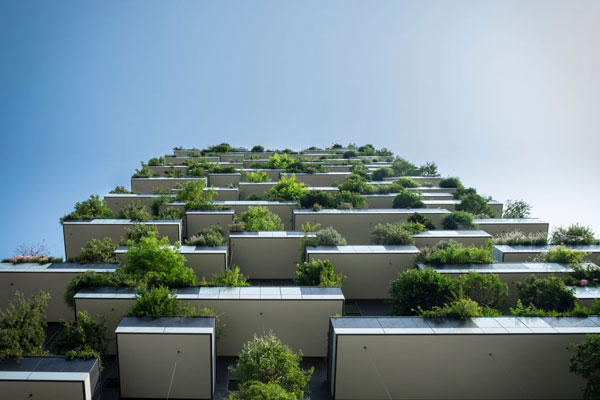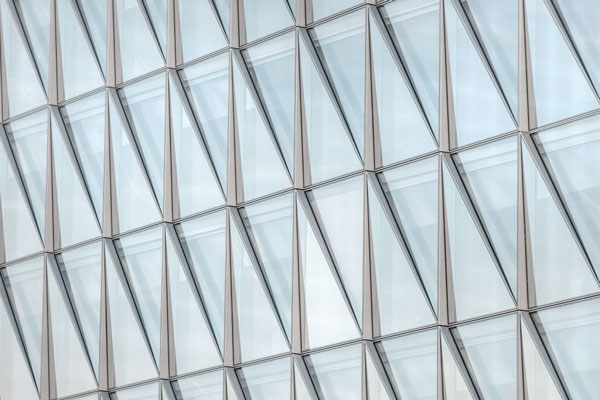
Sustainability is a many-pronged concept, but its main goal is to meet the needs of the present without compromising those of the future.
The wise use of resources needs to be baked in from the planning stages, whether you’re developing a city’s infrastructure or designing an individual building. But sustainable practices can be successfully retrofitted, too, from recycling existing materials, sourcing better alternatives when necessary and implementing smart technology along the way.
We’ve looked at what cities in the Midwest are doing in terms of sustainability and found that America’s breadbasket is leading the nation in sustainable building design and other practices.
Here is what America can learn from the Heartland.
City Infrastructures Are Badly in Need of an Upgrade
The New Partners for Smart Growth Conference took place in St. Louis in 2017, and that served as a key signifier of the Midwest’s arrival as a regional leader in sustainability. NP2017 drew local municipal officials, state and federal agency leaders, and professionals across industries including planning, transportation and architecture.
One session focused on upgrading aging infrastructures in cities to make them more sustainable, which in turn would improve quality of life and increase local innovation and competitiveness. Speakers included MySidewalk CEO Stephen Hardy and City of Chicago Chief Data Officer Tom Schenk Jr., who support the use of open data by local governments to better their communities.
Illinois Only Midwest State to Place in LEED Top 10
That being said, Illinois is the only Midwest state to place in the 2016 US Green Building Council’s LEED top 10. This is an annual ranking of the states that have made significant strides in sustainable building design, construction and transformation over the past year.
LEED is the most widely used third-party verification for green buildings, from private homes to schools, hospitals and data centers. Illinois has made the list every year since the ranking system began in 2010, with this year’s square footage representing 151 projects, notably the north wing of Chiaravalle Montessori School in Evanston.

Midwest Cities are Leading the Way in Benchmarking and Clean Energy
The move toward sustainability takes shape outside of building design itself. Illinois’ Future Energy Jobs Act, will increase that state’s renewable energy production. “It is going to invest between $500 and $750 million in low-income communities for energy efficiency, renewable energy, job training, so that low-income people can get into that kind of work, and so on,” Jordan Estevao of People’s Action explains.
According to the German American Chambers of Commerce, Chicago’s Sustainable Action Plan and Energy Benchmarking regulation is helping to improve energy efficiency in commercial buildings there. Spaces larger than 50,000 sq. ft. must submit their energy efficiency data to the city each year. This practice is likely to increase demand for energy efficiency technology within that building sector.
As environmental journalist Josh Marks writes at Inhabitat, Madison has just become the first city in Wisconsin — and the largest city in the Midwest — to commit to 100 percent clean energy. The city council voted for development of a plan to be in place by the new year for city operations to achieve net-zero greenhouse gas emissions and 100 percent renewable energy across all sectors, including electricity, heating and transportation.
Innovative Building Designs Make Built Spaces Much More Enjoyable
Engel & Völkers, a global real estate company, reports seeing a lot of innovation in building design. Architects today, they say, are creating functional buildings with minimal environmental impact and low energy usage. Ecologically designed net-zero emissions buildings typically use recycled rainwater, solar canopies and smart irrigation systems, integrating plants and green spaces both inside and out together with inbuilt renewable energy alternatives.
A good example of this kind of innovation is a development project underway in Logan Square, Chicago, by Moss Architects. The mixed-use commercial/retail and loft apartment starts with adaptive reuse, keeping the good bones of an existing structure and salvaging quality materials, thereby reducing waste. Natural light, solar panels, passive cooling and open green spaces in a courtyard and on a portion of the roof will be incorporated by the LEED-accredited architectural studio.
Plants walls, which improve air quality, provide cooling and serve as sound absorbers, have become so common in the built environment that David Brenner, co-founder of plant wall design and installation company Habitat Horticulture, tells Building Design+Construction they’re “almost passé.”
One example of living walls is the atrium of Goodyear’s global headquarters in Akron, Ohio. Two living walls decorate the environmentally sustainable building and as Goodyear’s director of facilities, Marty Ganzer, says the design brings “a little bit of a wow factor. Everybody has to touch it and feel it, because nobody believes it’s real.”

Climate Change Has Already Hit the Midwest Hard
Low-income communities across the Midwest, where cities experience temperature extremes, are installing green infrastructure in an attempt to protect residents in low-quality housing. The Center for American Progress reports that cities such as Ann Arbor, Michigan; Chicago; Cleveland; St. Paul, Minnesota; and Toledo, Ohio, are taking action that includes upgrading aging water, electricity and other infrastructures, and supporting home energy efficiency and weatherization.
And it’s Iowa City, population 70,000, that is at the forefront of urban sustainability issues, Matthew Messner at The Architects Newspaper writes. Spurred on by a tornado and a massive flood in 2008, residents formed “Ecopolis Iowa City,” a movement whose ideas ultimately formed the Iowa City Climate Action Plan. The goals include:
- Expanding urban agriculture
- Using green building designs
- Increasing renewable energy
- Expanding recycling and composting programs
- Supporting businesses that are actively greening their operations
Urban greening on a large scale is a necessity in Gary, Indiana and other cities in the industrial Midwest, which have collectively lost more than 30 percent of their populations since 1950. “The idea,” Winifred Bird at GreenBiz writes, “is to turn scrubby, trash-strewn vacant lots into vegetable gardens, tree farms, stormwater management parks and pocket prairies that make neighborhoods both more livable and more sustainable.”
Eve Pytel, director of strategic priorities at the Delta Institute, a Chicago environmental organization active in Gary, tells Bird the reason why projects like these are attracting significant funding from government agencies, private investors and nonprofits is that they’re low cost compared to traditional development, but still make other land more developable.
In other words, as Joseph van Dyk, Gary’s director of planning and redevelopment, put it, “If you lived next to a vacant house and now all of a sudden you live next to a forest, you're in better shape.”
In 2016, the Better Buildings Zero Energy Districts Accelerator was launched. Designed to push the building market to adopt sustainable practices, the program is a joint effort between the U.S. Department of Energy and the National League of Cities.
One of the six accelerator partners is the Ford Twin Cities assembly plant redevelopment project in St. Paul, Minnesota. The former plant, which covers 135 acres, will become a 21st Century community: a mixed-use neighborhood with clean technologies and high-quality designs for buildings, infrastructure and energy.
Credits:
Anton BelashovOliver Wendel
Samuel Zeller

